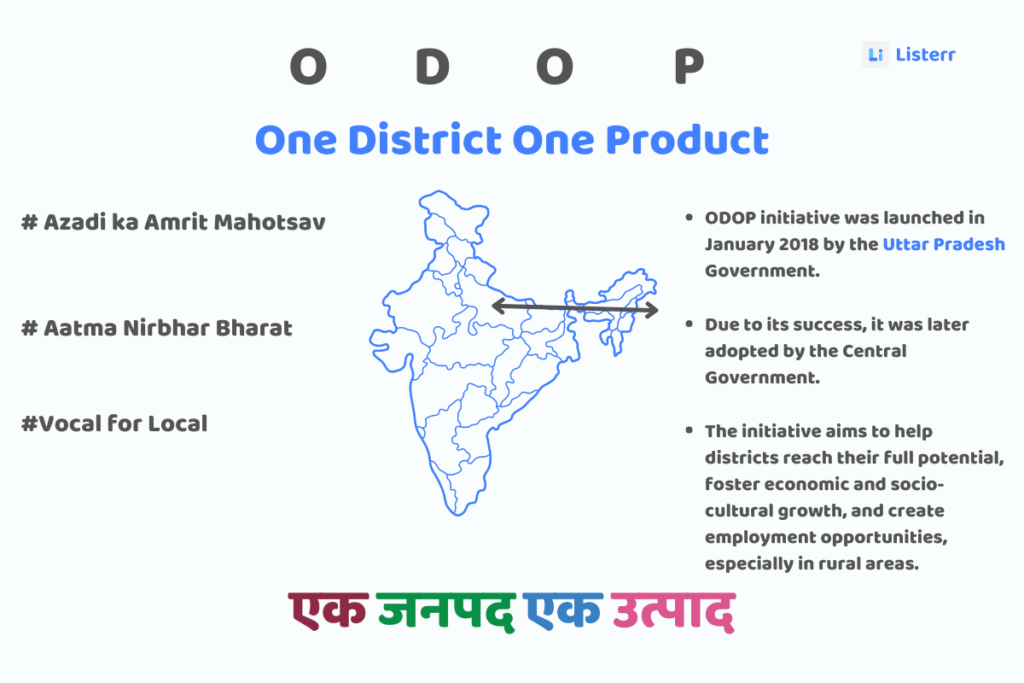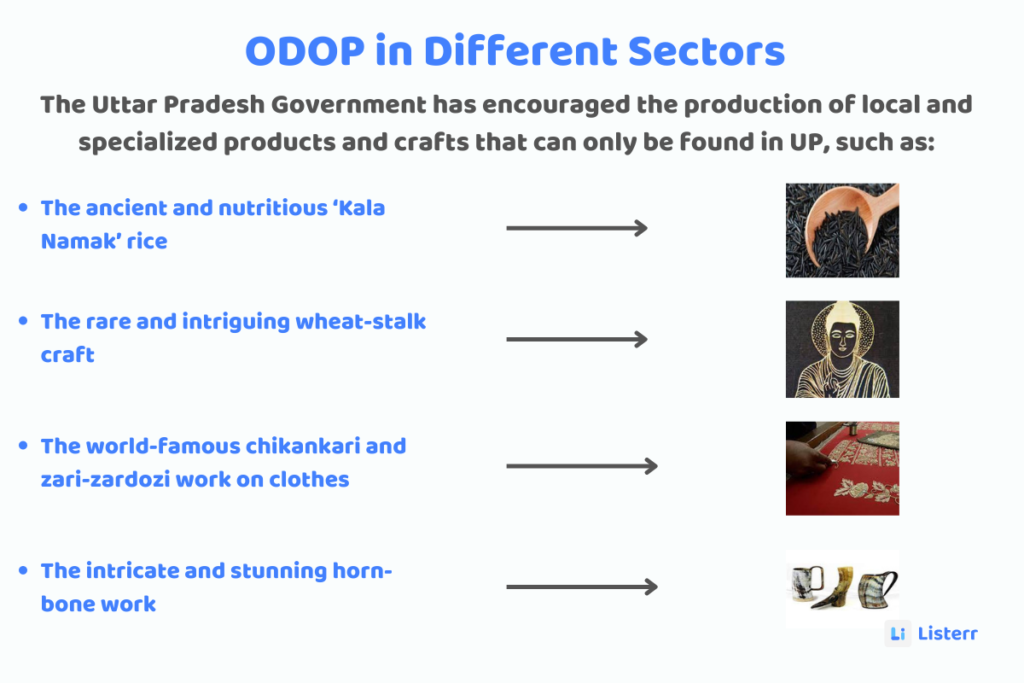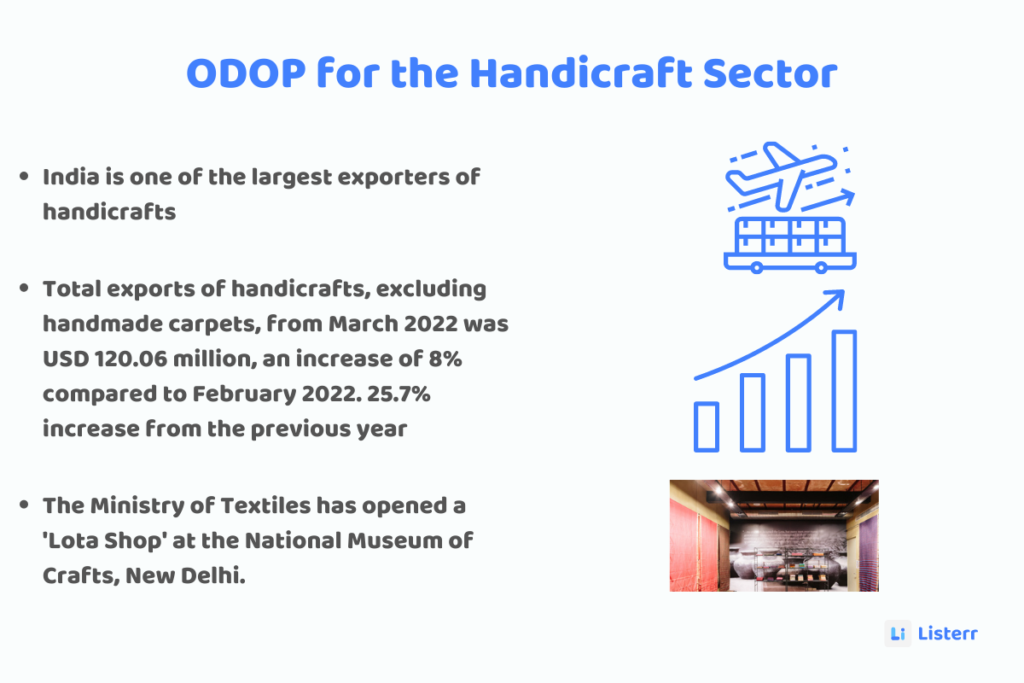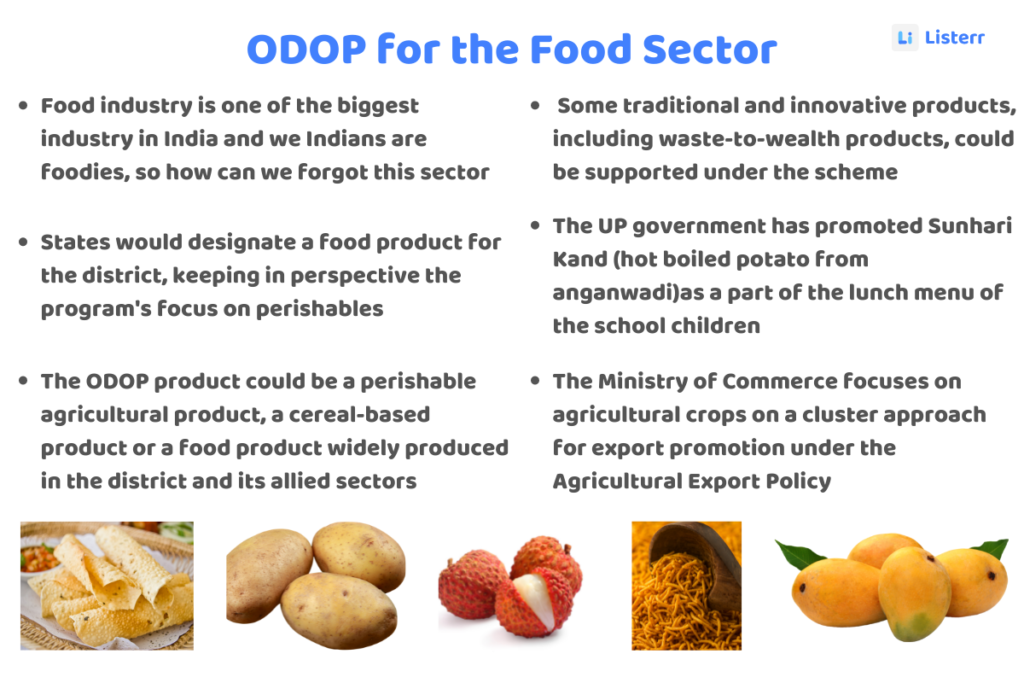What is India’s One District One Product Programme?
‘One District, One Product’ (ODOP) initiative is focused on helping all districts in India to develop more evenly, in line with the Honorable Prime Minister’s vision.
The ‘One District, One Product’ initiative was launched in January 2018 by the Uttar Pradesh Government. Due to its success, it was later adopted by the Central Government. The initiative is carried out with the ‘Districts as Exports Hub’ initiative by the Directorate General of Foreign Trade (DGFT), Department of Commerce.
The initiative aims to help districts reach their full potential, strengthen economic and socio-cultural growth, and create employment opportunities, especially in rural areas. It is a centrally supported scheme that is to be shared by the central government and states in the ratio 60:40. This program is one that focuses on every district as its own country, working to expand the outreach of their special product to not just India, but the entire world. By doing this, we hope to bring about a more united and productive global community.

What is the crux of ODOP?
ODOP is basically a Japanese business development concept that gained importance in1979. It aims to promote competitive and essential products in a specific area to increase sales and improve the living standards of the local population. Over time, it was replicated in other Asian countries as well.
The idea behind this initiative is to select, brand, and promote one product from each district of the country. This will enable entire socioeconomic growth across all regions and attract investment into the districts to boost manufacturing and exports. Additionally, this will generate employment in the districts and provide an ecosystem for innovation and technology use at the district level to make them competitive with domestic and international markets.
ODOP is seen as a big step forward in helping districts reach their potential, boosting economic growth and generating employment and rural entrepreneurship. This aligns with the goal of Aatma Nirbhar Bharat, making us more self-reliant as a nation.
The scheme follows the One District One Product (ODOP) approach to make the most of economies of scale when it comes to acquire inputs, availing common services, and marketing products. ODOP for the scheme will provide a framework for value chain development and alignment of supportive infrastructure. There may be more than one cluster of ODOP products in a district. There may also be a cluster of ODOP products consisting of more than one adjacent district in a State.

ODOP in Different Sectors
The Uttar Pradesh Government has set out to encourage the production of local and specialized products and crafts that can only be found in Uttar Pradesh, such as:
-The ancient and nutritious ‘Kala Namak’ rice
-The rare and fascinating wheat-stalk craft
-The world-famous chikankari and zari-zardozi work on clothes
-The complex and stunning horn-bone work that uses the remains of dead animals rather than live ones, a nature-friendly replacement for ivory

ODOP for the Handicraft sector
India is one of the largest exporters of handicrafts. Total exports of handicrafts, excluding handmade carpets, from March 2022 was USD 120.06 million, an increase of 8% compared to February 2022. 25.7% increase from the previous year. The Center is working towards a ‘one district, one product’ that inspires both the craft sector and artisans. The Ministry of Textiles has opened a ‘Lota Shop’ at the National Museum of Crafts, New Delhi.
The shop was opened by India’s Central Cottage Industries Corporation (CCIC), commonly known as the Central Cottage Industries Emporium. It is Showcasing handcrafted antiques, souvenirs, handicrafts and textiles based on traditional Indian handicrafts.

ODOP for the Food Sector
Food industry is one of the biggest industry in India and we Indians are foodies, so how can we forgot this sector. This sector is also considered in ODOP, so let’s see how it is.
States would select a food product for the district, keeping in perspective the program’s focus on perishables. The baseline study would be conducted by the state government. The ODOP product could be a perishable agricultural product, a cereal-based product or a food product widely produced in the district and its associated sectors. An illustrative list of such products includes, among others, mango, potato, litchi, tomato, tapioca, kinnu, bhujia, petha, papad, pickled vegetables, millet-based products, fisheries, poultry, meat and also animal feed. In addition, some other traditional and innovative products, including waste-to-wealth products, could be supported under the scheme. For example, honey, minor forest produce in tribal areas, traditional Indian herbal edible items like turmeric, amla, haldi etc. The Ministry of Commerce focuses on agricultural crops on a cluster approach for export promotion under the Agricultural Export Policy, and the Ministry of Education also focuses on a cluster approach for the development of specific agricultural products in districts with a comparative advantage. An ODOP system approach would ease the provision of common facilities and other support services.
To support the production of horticultural products under the One District One Product (ODOP) program and provide better nutrition to school children, the Government of Uttar Pradesh has promoted Sunahri Kand, also known as orange yam, as a hot-boiled potato from Anganwadi may be introduced into nutritional program as a part of the lunch menu of the school children.

Financial support under the ODOP program
There are various systems and programs to help people find financial help. Here is the list:
- Common Facility Center (CFC) scheme : This program provides financial support for up to 90% of project costs. This is provided by the state government.
- Marketing Development Assistance Scheme : Financial support is given to all participants of national and international exhibitions and fairs. It can be used to showcase and sell selected products under the ODOP program.
- Finance Assistance Scheme (Margin Money Scheme) : This scheme does not give a full fund, but just a margin for the project cost. Applicants receive it in the form of a grant to set up the project.
- Skill Development Scheme : All qualified craftsmen are trained through RPL (Recognition of Prior Learning). They are certified through various Sector Skills Councils (SSCs), while unskilled craftsmen are given 10 days of training and provided with a free advanced toolkit.

Advantages leading ODOP
- Many micro businesses will benefit from access to information, increased market presence and formalization. It allows them to formalize, grow and be competitive in the national and global space.
- The project is expected to produce valuable skilled and semi-skilled jobs.
- The program will improve access to credit for existing food micro processing entrepreneurs and aspiring district entrepreneurs including women entrepreneurs.
- Merging with organized markets will be much better, promoting artisans and local vendors.
- More access to common services such as sorting, grading, processing, packing and storage will be an additional benefit.
- ODOP helps preserve and develop local crafts and techniques, and promote the arts.
- Contributes to increased income and local employment, leading to reduced labor migration.
- Product quality improvement and competence development are the results of this program.
- ODOP also helps artistically transform products (through packaging or branding).
- Links between production and tourism. This can be done through live demonstrations and point of sale offering gifts.
- It also helps solve the problem of economic inequality along with stability.

Conclusion
Indian crafts, agriculture and food have the potential to dominate the global market if given opportunities for systematic growth and recognition. ODOP aims to achieve this by providing the right support and business environment. E-commerce opens up opportunities to improve the reach and momentum of product design and manufacturing by providing access to new markets. Due to the current situation of globalization, crafts and other local sectors would greatly benefit from such initiatives. These sectors face several challenges such as lack of access to credit, high costs of institutional credit, lack of access to modern technology, inability to merge into supply chains, and observing to safety standards. Enhancing these aspects through One District One Product (ODOP) will help achieve the government’s goal of reducing waste, creating job opportunities, and doubling the income of farmers and local artisans.


